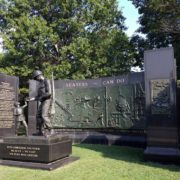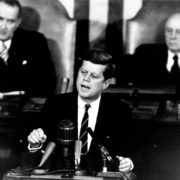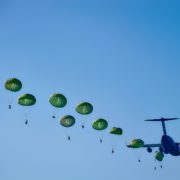What started the Korean War?
What is the Korean War? The Korean War is a militarised conflict between the North Korea and South Korea. It broke out when North Korea invaded South Korea on 25 June 1950 by crossing the 38th Parallel. The invasion was met with swift resistance by South Korea, which was assisted by the United States (US) and United Nations (UN). Over time, the conflict was intensified by the influx of Cold War influences that originated from the indirect and direct responses by the two superpowers, US and USSR.
Derive a better understanding of this Cold War conflict by analyzing the contributing factors that will be examined in the following sections.Topic of Study [For H2 and H1 History Students]: Paper 1: Understanding the Cold War (1945-1991) Section A: Source-based Case Study Theme I Chapter 2: A World Divided by the Cold War – Manifestations of the global Cold War: Korean War (1950-53)
1. The Division of Korea After the Second World War, the two superpowers occupied Korea. The US landed on South Korea, while USSR entered North Korea. The occupation lasted for several years until the United Nations (UN) passed a resolution that declared free elections to be held. As a result, South Korea held an election that concluded with Syngman Rhee being declared the first president of the “Republic of Korea” (ROK) in August 1948. As for North Korea, the “Democratic People’s Republic of Korea” (DPRK) announced Kim II-Sung as its Prime Minister a month later. These two historic events signaled a permanent division of the Korean peninsula and set the stage for the Korean War.
2. Political Motivations for the Invasion Kim II-Sung bore political ambitions to unify the Korean peninsula under communist rule. He held the perception that an invasion would be met with positive reception by the South Korean citizens. As such, Kim sought the approval of Stalin before commencing with the invasion. Eventually, Stalin agreed under the condition that Soviet troops would not be involved directly if there was a military confrontation with the US. Consequently, the North Korean forces crossed the 38th Parallel on 25 June 1950, marking the start of the Korean War.
3. Strategic Considerations From Stalin’s perspective, a unified communist Korea would prove useful in advancing the Soviet Union’s Cold War agenda. However, Stalin contemplated Kim II-Sung’s proposal to invade South Korea cautiously. Stalin was careful to avoid direct confrontation with US and took evasive steps to ensure that North Korea was the primary instigator for the invasion. As such, Stalin provided military support to North Korea, such as Soviet military advisors and artillery pieces. These military hardware and guidance aided Kim II-Sung for his incursion into South Korean territory.
4. Ideological Motivations As for the Americans, the North Korea invasion was unexpected. Although the invasion was led by North Korea, the US interpreted these attacks as an act of ideological expansionism orchestrated by Stalin. As described by former US President, Dwight Eisenhower, the ‘domino theory‘ illustrated how one country falling to communism would cause the surrounding countries to be undermined by this ideological threat as well. Given this understanding, the Korean War confirmed the suspicions of the Americans.
In response, US led the discussions in the UN and formed a military coalition to counter the North Korean invasion. The swift response to the perceived ideological threat was consistent with Truman’s push for the ‘Containment Policy’. As such, US supported South Korea and succeeded in repelling the North Korean forces back to the 38th Parallel. However, the US revised its aim to cross the 38th Parallel and adopted a policy of rollback to eradicate communist influence in the North. The UN forces then crossed the partition line. Hence, it was evident that these actions revealed the ideological motivations of the US in the globalised Cold War conflict.4. Outcome of the Korean War Following the UN’s crossing of the partition line, China came to the aid of North Korea. After a prolonged period of military confrontation between the North and South, US called for ceasefire and an armistice was signed on 27 July 1953. Notably, the Korean War had intensified the superpower rivalry that was observed in subsequent conflicts, like the Cuban Missile Crisis. In recent years, observers have argued that there are improvements in the diplomatic ties between the two Koreas, as exemplified by the desire to end the war formally.
What’s Next? Now that you have walked through this journey of what may have caused the Korean War, you should reinforce your revision of this chapter by reflecting on the following questions: – Was the Korean War a localised or Cold War conflict? – How did the superpowers capitalise on the Korean War to advance their Cold War aims? – In comparison to the Cuban Missile Crisis (1962), identify the similarities and differences of the Korean War in influencing the Cold War developments beyond Europe [to be covered in our lessons].
The H2 and H1 History Tuition feature online discussion and writing practices to enhance your knowledge application skills. Get useful study notes and clarify your doubts on the subject with the tutor. You can also follow our Telegram Channel to get useful updates. We have other JC tuition classes, such as JC Math Tuition and JC Chemistry Tuition. For Secondary Tuition, we provide Secondary English Tuition, Secondary Math tuition, Secondary Chemistry Tuition, Social Studies Tuition, Geography, History Tuition and Secondary Economics Tuition. For Primary Tuition, we have Primary English, Math and Science Tuition. Call 9658 5789 to find out more.



